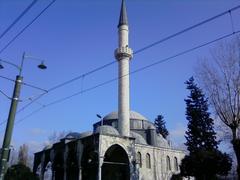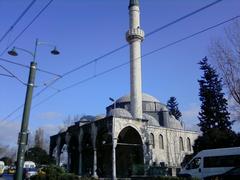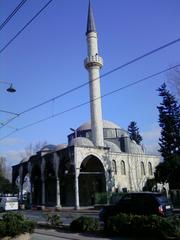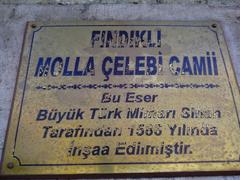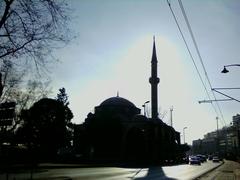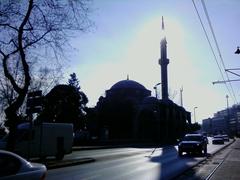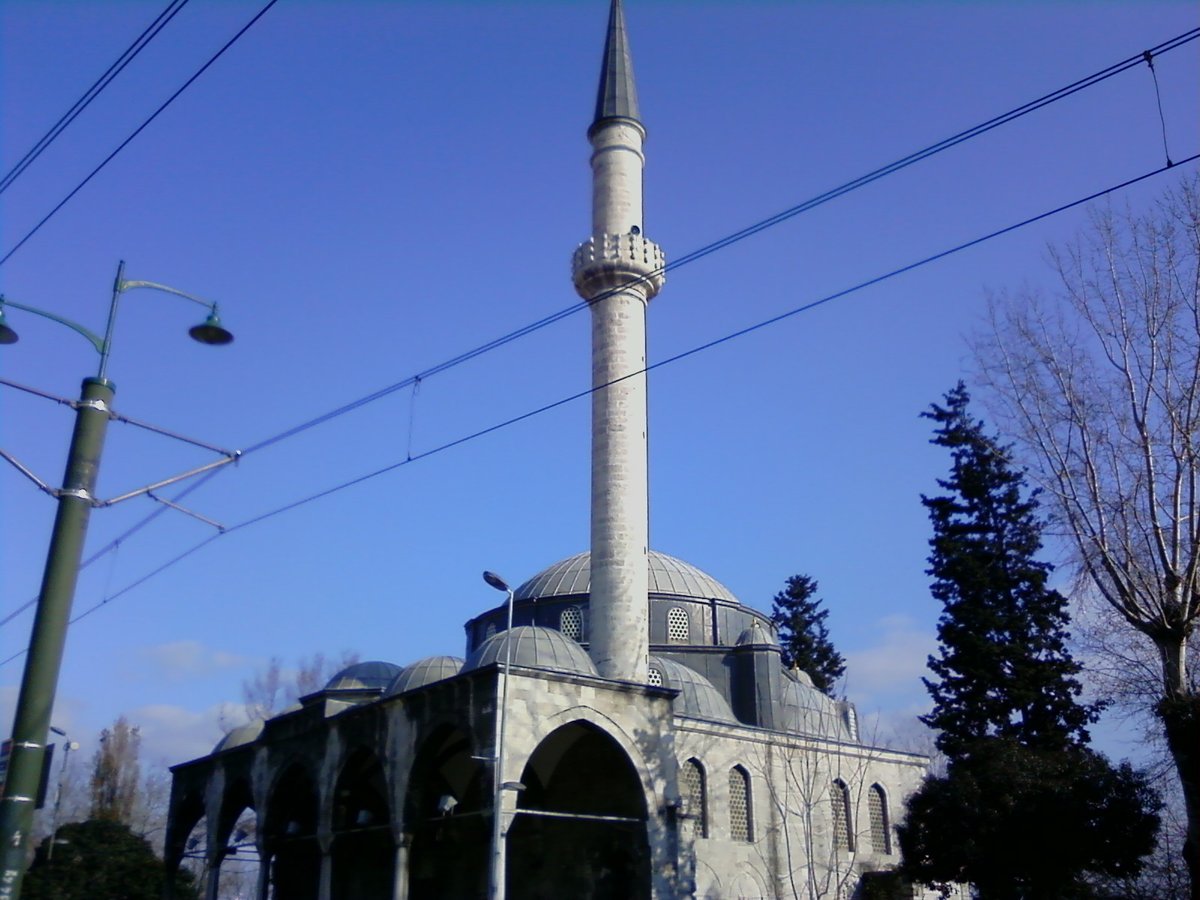
Molla Çelebi Mosque Istanbul: Visiting Hours, Tickets, and Historical Significance
Date: 14/06/2025
Introduction
Nestled along the scenic Bosphorus in Istanbul’s vibrant Fındıklı neighborhood, the Molla Çelebi Mosque stands as an enduring testament to the city’s Ottoman heritage and architectural mastery. Often referred to as the Fındıklı Mosque, this elegant structure was commissioned in the 16th century by Mehmed Vusulî Efendi, also known as Molla Çelebi—a prominent Ottoman scholar and jurist. Its design by the celebrated imperial architect Mimar Sinan places it firmly within the golden age of Ottoman construction, reflecting both spiritual devotion and urban sophistication (Kültürel Miras, List.Istanbul).
Unlike the imposing imperial mosques that dominate Istanbul’s skyline, Molla Çelebi Mosque is admired for its modest yet innovative architectural features, such as its rare hexagonal prayer hall and harmonious blend of light, space, and ornamentation. The mosque’s picturesque location offers panoramic views of the Bosphorus and convenient access to nearby attractions, making it a rewarding stop for history enthusiasts, architecture lovers, and spiritual seekers alike (nomadicniko.com).
This guide explores the mosque’s rich history, architectural highlights, religious and cultural role, practical visitor information—including tickets, hours, and accessibility—and travel tips to enrich your visit to this hidden gem of Istanbul’s waterfront (trek.zone, myadventuresacrosstheworld.com).
Historical Foundations and Patronage
The Patron: Mehmed Vusulî Efendi (Molla Çelebi)
Molla Çelebi Mehmed Vusulî Efendi was a distinguished scholar, jurist, and educator in the Ottoman Empire. His legacy is intertwined with the Ottoman tradition of charitable endowments (waqf), which provided not only places of worship but also centers for education and community life. Upon his passing in 1590, Molla Çelebi was laid to rest in the spiritually significant Eyüp district (Kültürel Miras).
Construction Era and Mimar Sinan’s Design
Commissioned during the reign of Sultan Suleiman the Magnificent, the mosque was completed in the 1560s, a period of immense architectural innovation in Istanbul. Mimar Sinan, the empire’s chief architect, adapted monumental forms to a smaller urban plot, creating a nearly square plan crowned by a central dome supported by six arches and piers—a structural and aesthetic experiment inspired by earlier Ottoman works (Kültürel Miras).
The Original Külliye: Complex Components
The original mosque complex (külliye) once included:
- Hamam (Bathhouse): Built in 1560–1561, one of the city’s busiest public baths until its demolition in 1957 for road expansion (Kültürel Miras).
- Sıbyan Mektebi (Elementary School): Provided primary education but no longer survives.
- Hazire (Cemetery): Located at the western end, containing historic Ottoman tombstones, such as that of Şeyhülislâm Sadreddinzâde Sâdık Mehmed Efendi (d. 1709).
Restoration and Endurance
Over centuries, the mosque has endured fires, earthquakes, and urban changes. Notably, after a fire in 1843, the last prayer area was reconstructed, and the minaret was rebuilt in its original style. The mosque today retains much of its original architectural character (Kültürel Miras).
Architectural Highlights
Unique Hexagonal Plan and Prayer Hall
The Molla Çelebi Mosque stands out for its rare hexagonal prayer hall, measuring about 18.9 by 16.4 meters. A central dome, 11.8 meters in diameter, is supported by six piers, creating a spacious, light-filled interior that enhances the spiritual ambiance (nomadicniko.com).
Domes and Semi-Domes
Five semi-domes surround the main dome, providing both structural support and spatial openness. This arrangement echoes Sinan’s innovative approach to mosque design, where light and proportion are harmoniously balanced.
Mihrab and Prayer Niche
The mihrab, located within an apse-like recess, is adorned with restrained tilework and calligraphy, emphasizing both function and spiritual focus.
Exterior Features
- Façade and Entrance: The mosque’s façade features a welcoming porch with four small domes and a monolithic stone entrance.
- Minaret: A slender single minaret gracefully rises from the right corner, complementing the mosque’s silhouette.
- Windows and Light: Ten windows at the dome’s base and additional openings along the walls fill the prayer hall with natural light, contributing to a serene and uplifting atmosphere.
Interior Ornamentation
The mosque’s interior is defined by simplicity and elegance. Minimal decoration allows the architectural forms and play of light to take center stage, while selective calligraphy panels and geometric motifs enrich the spiritual experience.
Cultural and Religious Significance
Community Role
Molla Çelebi Mosque remains an active place of worship, hosting the five daily prayers, Friday congregational prayers, and religious festivals. Its tranquil setting fosters a sense of community and continuity within the bustling city (myadventuresacrosstheworld.com).
Urban and Interfaith Layers
The mosque’s proximity to key cultural sites and its historical echoes of Byzantine architectural features underscore Istanbul’s layered religious and cultural heritage (istanbul.tips). The apse-like mihrab and harmonious proportions reflect the city’s tradition of blending artistic influences across centuries.
Visiting Information: Hours, Tickets, Accessibility, and Tours
Visiting Hours
- Open daily, typically from 9:00 AM to 6:00 PM.
- Closed to tourists during the five daily prayers (each lasting about 90 minutes) and especially busy during Friday (Jumu’ah) prayer (Wander-Lush).
Ticket Information
- Entry: Free of charge for all visitors.
- Donations: Appreciated to support maintenance and preservation.
Accessibility
- Transport: Easily accessible via the T1 tram (Fındıklı–Mimar Sinan Üniversitesi stop), Kabataş ferry terminal, and city buses along Meclis-i Mebusan Street (Istanbul.tips).
- Physical Access: Street-level entrance and gentle ramp make the mosque accessible for visitors with disabilities.
- Facilities: Accessible restrooms may be found in nearby modern establishments.
Guided Tours and Special Events
- Guided tours can be arranged through local operators or self-guided via travel apps like GPSmyCity (GPSmyCity).
- The mosque occasionally hosts cultural events and exhibitions in collaboration with the nearby Mimar Sinan Fine Arts University.
Travel Tips and Visitor Etiquette
- Best Times to Visit: Mid-morning or mid-afternoon to avoid crowds and prayer times.
- Dress Code: Modest clothing is required. Women should cover their hair, shoulders, and knees; men should wear long pants. Shoes must be removed before entering the prayer hall.
- Photography: Permitted outside prayer times. Ask permission before photographing worshippers and avoid using flash.
- Safety: The neighborhood is safe and well-patrolled. Respectful, quiet behavior is appreciated, especially within the mosque.
- Nearby Attractions: Explore Dolmabahçe Palace, Istanbul Modern Art Museum, Karaköy district, and enjoy Bosphorus waterfront cafes (GPSmyCity).
Frequently Asked Questions (FAQ)
Q: What are the Molla Çelebi Mosque visiting hours?
A: Open daily, typically from 9:00 AM to 6:00 PM, except during prayer times.
Q: Is there an entrance fee or ticket required?
A: Admission is free; donations are appreciated.
Q: Are guided tours available?
A: Yes, both private and self-guided tours are available.
Q: Is the mosque accessible for wheelchair users?
A: Yes, there is street-level access and ramps for accessibility.
Q: What is the dress code?
A: Modest attire is required; women should cover their hair, shoulders, and knees, and men should wear long pants.
Q: Can I take photos inside?
A: Yes, but avoid photographing worshippers and do not use flash during prayers.
Preservation and Contemporary Relevance
Ongoing restoration ensures that the Molla Çelebi Mosque remains structurally sound and faithful to its original design. Its continued use as a place of worship and community gathering highlights the mosque’s vital role in Istanbul’s spiritual and cultural life. The mosque’s understated elegance and historical depth make it a meaningful destination for those seeking to understand Istanbul’s layered identity (trek.zone).
Summary and Visitor Recommendations
Molla Çelebi Mosque embodies the harmonious interplay of history, architecture, and community in Istanbul. Designed by Mimar Sinan and commissioned by a distinguished Ottoman jurist, its unique hexagonal plan, serene ambiance, and accessible location make it a standout among the city’s historic sites. Whether you are interested in Ottoman architecture, cultural history, or seeking a peaceful retreat along the Bosphorus, a visit to Molla Çelebi Mosque promises insight and inspiration.
Plan your visit by checking updated hours, respecting local customs, and considering a combined itinerary with nearby landmarks for a rich Istanbul experience. Downloading cultural apps like Audiala or using resources such as official Istanbul tourism website can further enhance your journey.
Sources and Further Information
- Kültürel Miras
- List.Istanbul
- GPSmyCity
- Nomadic Niko
- Trek.zone
- My Adventures Across The World
- Wander-Lush
- Istanbul.tips
